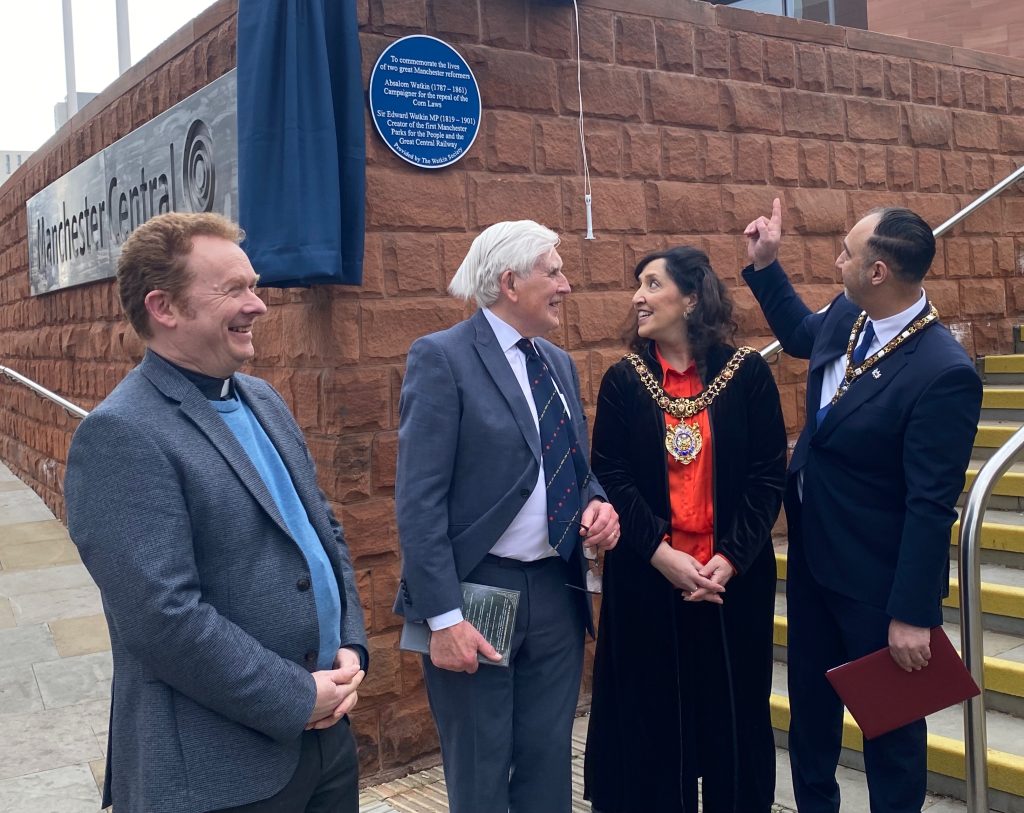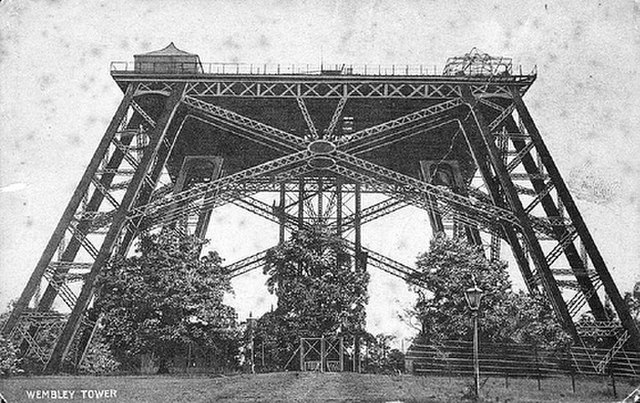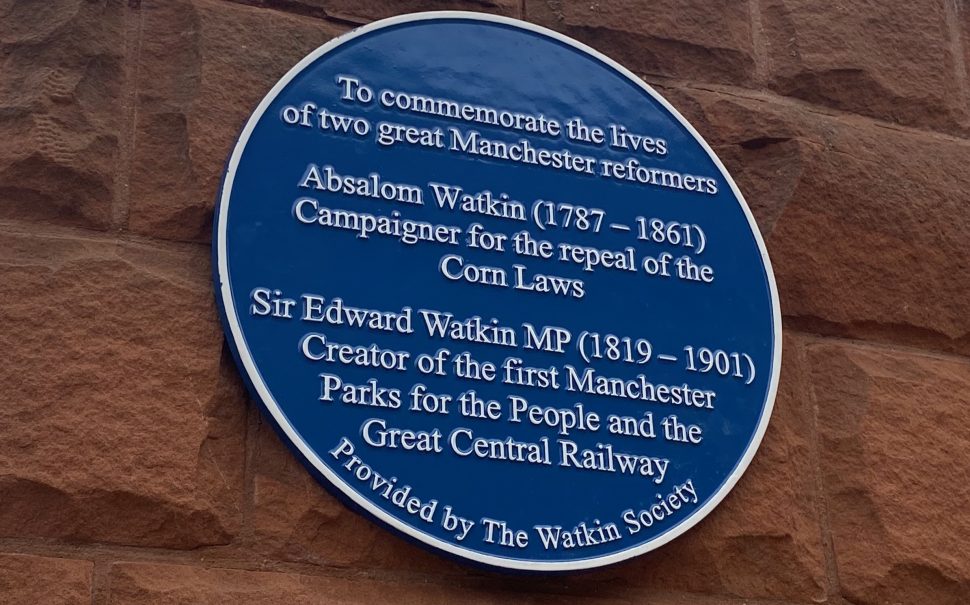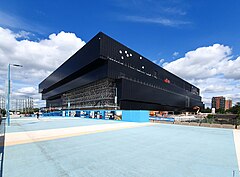A blue plaque commemorating two of 19th-century Manchester’s most fascinating and visionary men has been unveiled on the steps of Manchester Central.
The plaque honours railway entrepreneur Sir Edward Watkin and his father Absalom Watkin, two figures who, though now relatively unknown, were hugely significant in their day.
The Lord Mayor of Manchester, Cllr. Yasmine Dar, and Geoff Scargill, founder and chairman of the Watkin Society, unveiled the memorial to rapturous applause last Thursday.
Geoff, a retired headteacher, said of Watkin: “He was one of the best-known people in Victorian England. But his fame has died with him.
“We’re going to make sure people talk about him.”

Sir Edward, born in Salford in 1819, was a railway pioneer who built the last mainline connecting London to the north, which terminated at the very place the plaque was unveiled.
Known by his contemporaries as the ‘railway king’, he was chairman of nine railway companies, helped unite the Canadian provinces after building the country’s first transcontinental railway, and was also an MP for 30 years – to name but a few of his achievements.
Geoff, who has also authored a biography on Watkin, said: “If there was a challenge, the worst thing to say to Sir Edward was that it can’t be done.”
A progressive-minded man, he founded the first public parks in Manchester and successfully reduced the length of the working week, freeing up leisure time for workers.
For Geoff, Watkin’s liberal motivations are what make it so important he is remembered: “He tried to do good – he wanted to open up the lives of ordinary people. [Train travel] opened up the world for ordinary people. It changed the balance of society.”
Towards the end of his life, Sir Edward became known for a number of bold – but ultimately unsuccessful – ventures.
In 1880, he attempted to build a tunnel linking Britain with France, over a hundred years before Eurostar.
However, what did get built ended up bricked up and sealed after the British government feared the tunnel would be used as an invasion route by the French.
In 1889, he began to develop the area around what is now Wembley Park, which included plans to build a 358m four-legged iron tower to surpass the then brand-new Eiffel Tower.

Plagued by structural issues and Watkin’s ill health, construction did not get further than the first 50 metres, and the stump gained the nickname ‘Watkin’s Folly’.
It was demolished by 1907, the site now underneath the pitch of Wembley Stadium.
Also commemorated by the plaque is Sir Edward’s father, Absalom, a pioneering social reformer and champion of the working class.
Born in 1787, he heavily publicised the Peterloo Massacre of 1819, when troops in Manchester charged into a crowd of protesters demanding parliamentary representation, and later helped repeal the Corn Laws, helping to reduce poverty and malnutrition.
A lifelong fighter for the rights of the most disadvantaged, his mill was one of only eleven in Manchester that refused to sell cotton grown on American slave plantations.
Geoff founded the Watkin Society in 2019, being both struck by the extraordinary lives of both men, and surprised that he hadn’t heard more about them.
Since then, the society has gone from strength to strength, and was awarded National Lottery Heritage Funding that allowed it to create education packs to distribute around schools.
It hopes to continue its educational outreach across the country, in particular in places where the work of Sir Edward and Absalom had an impact.
“I’m really chuffed,” said Geoff, commenting on the work of the society and the efforts it made to get the plaque installed.
“And I’m very proud – we built something from nothing.”
Featured image credit: Tom Bryden




